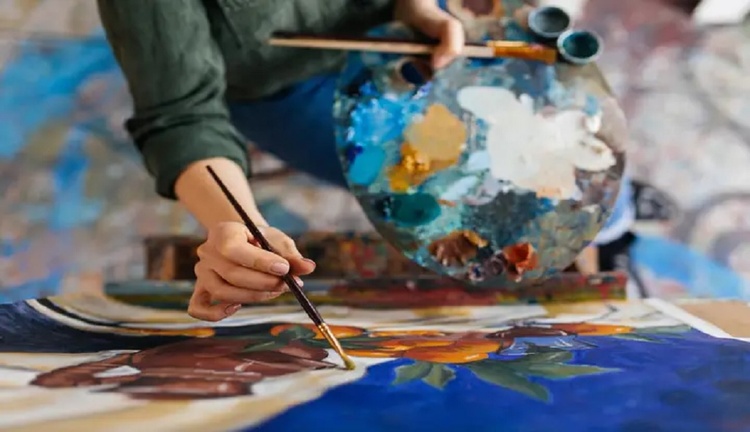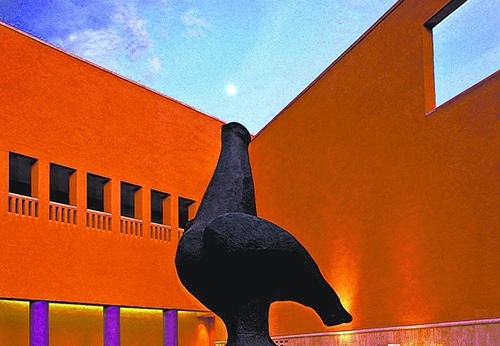
Yayoi Kusama: Her Story and Influence on Latin American Art
Yayoi Kusama is not just an artist; she is a visual phenomenon, a living legend, and a revolutionary of perception. Her work transcends generations, cultures, and geographies.
She has created a universe where dots, repetitions, and infinite spaces become artistic language, psychological expression, and personal refuge. Her work has spread from her native Matsumoto, Japan, to major museums around the world.
But what happens when that universe meets Latin America, a vibrant, emotional, contradictory, and deeply creative region? In this article, we explore the impact Kusama has had on our continent.
In addition, we will show how her ideas are reflected in different local artists and what role her legacy plays in global contemporary art. Continue reading and discover Kusama's world.
The Kusama Universe: Between Psychedelia and Avant-Garde
Since her early works in the 1950s, Yayoi Kusama has challenged the boundaries of art. She has combined painting, sculpture, installation, performance, and, later, digital media.
Her visual language is unmistakable: infinity dots, obsessive webs, mirrors, pumpkins, and immersive environments that seek to dissolve the notion of individual identity to immerse us in a total experience.
This universe is neither casual nor simply decorative. Kusama has struggled with visual hallucinations since childhood, experiences that defined her relationship with the world and that would later become her creative driving force.
Her works are not only inspired by psychedelics, but often predate them. Before the countercultural explosion of the 1960s, she was already exploring repetition as a way of losing and finding herself in space.
Her "Infinity Mirror Rooms" and her nude performances in New York broke not only aesthetic but also social, political, and existential molds. In an era marked by repression and war, she used the body, repetition, and space as forms of protest and liberation.
The obsession with dots and their artistic significance
Polka dots are not just Kusama's visual signature; they are a metaphor for existence itself. For her, each dot represents a cell, a planet, a drop in the ocean of the universe.
Repeated endlessly, dots generate a hypnotic, enveloping effect that confronts us with the sublime and the overwhelming. In her personal manifesto, Yayoi Kusama explained that through dots she sought to dissolve the ego, merge with the environment, cease being "one" to become "whole."
This spiritual quest is very present in her work, but it also has a deeply emotional side: the attempt to give form to inner chaos, to channel anxiety, trauma, and obsession.
For many viewers, her installations are Instagrammable and colorful, but behind that visual impact lies a story of struggle against pain, mental confinement, and marginalization.
The dot thus becomes a symbol of life and emptiness, of presence and disappearance. It is a minimal gesture that, repeated thousands of times, constructs a cosmos where the personal and the universal merge.
Japanese and Western Influences in Her Work
Although Kusama is profoundly Japanese, her work cannot be understood without her experience in the West. Born into a conservative family and subjected to a strict upbringing from a young age, she sought freedom through art from a young age.
In the 1950s, she moved to the United States, where she lived for more than a decade and was an active part of the New York art scene. There, she mingled with figures such as Andy Warhol, Claes Oldenburg, and Joseph Cornell.
However, far from fading into the pop scene, Yayoi Kusama championed her own unique voice; she did so with an aesthetic vision that fused the organic with the cosmic, the minimalist with the baroque.
While Warhol multiplied images of celebrities, Kusama multiplied dots to make herself disappear. She also drew from traditional Japanese art, especially Zen minimalism, Noh theater, and textile design.
Read more


- December 29, 2025
Artificial Intelligence and the Reconfiguration of Artistic Practices

- December 29, 2025
The Artificial Intelligence Revolution in Modern Art

- December 29, 2025
Metamorphoses— Award winning animation short film (2021)

- December 29, 2025
Children in War and Peace


- December 29, 2025
Holy Wrath, Holy Act

- December 28, 2025
The Difference Between Contemporary Art and Modern Art

- December 28, 2025
The Impact of Contemporary Art on Today's Society

- December 29, 2025
Artificial Intelligence and the Reconfi…

- December 29, 2025
The Artificial Intelligence Revolution …

- December 28, 2025
The Difference Between Contemporary Art…

- December 28, 2025
The Impact of Contemporary Art on Today…

- December 28, 2025
Contemporary Art and its Multiple Langu…

- December 27, 2025
Graffiti: Urban Voices That Tell Stories

- December 27, 2025
The Art of Graffiti: Expression, Identi…

- December 24, 2025
Art as Human Expression and Universal L…

- December 24, 2025
Art in the Street: When the City Become…

- December 23, 2025
Urban Art in Latin America

- December 23, 2025
Folk Art in Indigenous Communities of L…

- December 22, 2025
Graffiti as a Social and Political Lang…

- December 22, 2025
Graffiti – From the Street to Contempor…

- December 21, 2025
Contemporary Art and New Visual Narrati…

- December 21, 2025
Latin American Visual Art as a Space of…

- December 20, 2025
Painting in the Americas: Origins and E…

- December 20, 2025
Key Latin American Artists in the Anti-…

- December 18, 2025
Artistic Movements and Expressions of R…

- December 18, 2025
Art and Anti-Imperialism in Latin Ameri…

- December 17, 2025
Visual Art in El Salvador: Between Memo…

- August 29, 2023
The history of Bolivian art

- February 19, 2024
Analysis and meaning of Van Gogh's Star…

- January 28, 2024
Culture and Art in Argentina

- September 25, 2023
What is the importance of art in human …

- September 23, 2023
What is paint?

- August 23, 2023
The 11 types of art and their meanings

- August 10, 2023
14 questions and answers about the art …

- September 23, 2023
Painting characteristics

- August 30, 2023
First artistic manifestations

- January 12, 2024
10 most beautiful statues and sculpture…

- September 23, 2023
History of painting

- March 26, 2024
The importance of technology in art1

- July 13, 2024
The impact of artificial intelligence o…

- March 26, 2024
Cultural identity and its impact on art…

- April 07, 2024
Graffiti in Latin American culture

- April 06, 2024
History of visual arts in Ecuador

- August 16, 2023
The 15 greatest painters in art history

- April 02, 2024
History visual arts in Brazil

- October 18, 2023
History of sculpture

- November 21, 2024
The Role of Visual Arts in Society

- February 19, 2024
Analysis and meaning of Van Gogh's Star…

- August 13, 2023
9 Latino painters and their great contr…

- August 23, 2023
The 11 types of art and their meanings

- August 10, 2023
14 questions and answers about the art …

- August 27, 2023
15 main works of Van Gogh

- August 29, 2023
The history of Bolivian art

- January 28, 2024
Culture and Art in Argentina

- November 06, 2023
5 Latin American artists and their works

- September 23, 2023
Painting characteristics

- September 23, 2023
What is paint?

- September 25, 2023
What is the importance of art in human …

- March 26, 2024
Cultural identity and its impact on art…

- August 30, 2023
First artistic manifestations

- December 18, 2023
10 iconic works by Oscar Niemeyer, geni…

- January 20, 2024
What is the relationship between art an…

- January 12, 2024
10 most beautiful statues and sculpture…

- August 24, 2023
The most famous image of Ernesto "Che" …

- October 30, 2023
Characteristics of Contemporary Art

- May 26, 2024
Técnicas de artes visuais

- August 22, 2023


